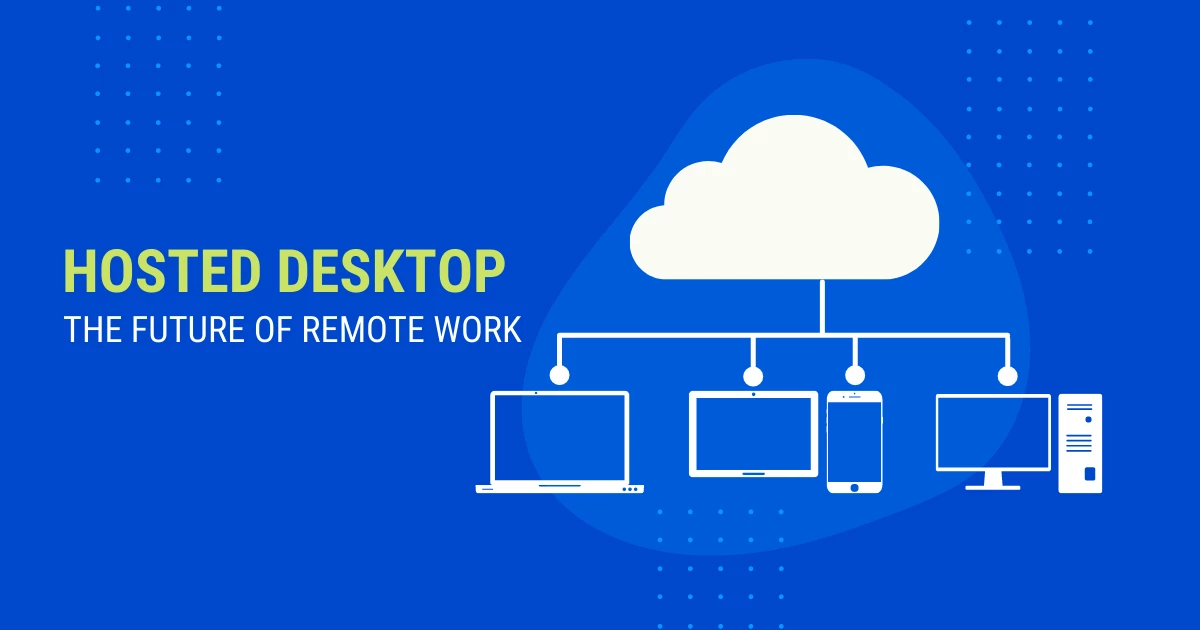
Partner Article
Hosted Desktop - The Future of Remote Work
Remote working has become a new normal for most businesses across the world due to the Coronavirus pandemic since 2020 till today. But after that what? What will be the future of remote work? Let’s dive in.
While this started as a temporary shift, many companies have been adopting this as a permanent remote working option after experiencing the known benefits. 28% of the UK’s fastest growing businesses moving to permanent remote working as per Data from ECI Partners’ Growth Index 2020
Several companies are looking at a hybrid working model, whereby employees can work occasionally from the office and rest by working remotely from any location or home. According to new research by the Adecco Group UK and Ireland, 77% of UK employees say a mix of office-based and remote working is the best way forward post COVID-19.
To help your employees to work smarter, efficiently and in a secure manner by using their own devices, Hosted Desktop can be a great feasible and practical option for businesses today, which is the future of remote work.
So what exactly is a Hosted Desktop? It’s a desktop hosted in a cloud. It allows access to all your files and applications from anywhere using a web browser on any internet connected device. No hassle of installing or downloading anything. Here is a beginner’s guide to a hosted desktop to know how it works, what benefits you get, how much it costs etc.
Hosted Desktop is also known as Cloud Desktop, Desktop as a Service (DaaS) and Virtual Hosted Desktop.
Hosted Desktop embraces the future of remote work and hybrid work models. It is considered to be
- more secure than on-premise solutions
- improves productivity and efficiency and
- promises better engagement and collaboration.
While most businesses are actively focusing on digital transformation, CIOs are actively considering desktop as a service-like solutions for their workforce to keep their costs down.
Moreover, Cloud Desktops offers similar user experience and performance as to traditional desktops because of which there is a high level of acceptance among employees.
As per Lenovo’s Future to Work and Digital Transformation research study, 83% of businesses expected workers to be remote for at least half of time even after post COVID. Looking at the global demand, Lenovo introduced its hosted desktop solution with Nutanix a few months ago.
Similarly, last year Microsoft partnered with Citrix on the future of virtual desktops. Then partnered with VMware to extend functionalities of Windows Virtual Desktop to Horizon Cloud on MS Azure.
Cyber security still remains one of the key issues for businesses which has exponentially increased during the coronavirus pandemic. Here is where Hosted Desktops come in. It offers better control over all business assets along with the most advanced security features. It also eliminates the need of data protection on user devices by turning into zero-trust endpoints (ensuring that all data remains in the data centre all the time) make BYOD feasible, however this may or may not be available in every cloud desktop solution.
Because of the growing popularity of DaaS, an analyst from Forrester Research forecast that most of the organisations will continue to invest in DaaS over the next year.
So what all these mean is that “remote working is here to stay”. Even after the coronavirus pandemic is over, a large number of companies will continue to allow their workforce to work remotely.
Secondly, there is a significant increase in the trust level to adopt cloud based solutions despite security and privacy concerns.
Finally, it is helping in improving the overall user experience and the way people work.
Happy Remote Working!
This was posted in Bdaily's Members' News section by Tech Results Ltd. .








 A year of growth, collaboration and impact
A year of growth, collaboration and impact
 2000 reasons for North East business positivity
2000 reasons for North East business positivity
 How to make your growth strategy deliver in 2026
How to make your growth strategy deliver in 2026
 Powering a new wave of regional screen indies
Powering a new wave of regional screen indies
 A new year and a new outlook for property scene
A new year and a new outlook for property scene
 Zero per cent - but maximum brand exposure
Zero per cent - but maximum brand exposure
 We don’t talk about money stress enough
We don’t talk about money stress enough
 A year of resilience, growth and collaboration
A year of resilience, growth and collaboration
 Apprenticeships: Lower standards risk safety
Apprenticeships: Lower standards risk safety
 Keeping it reel: Creating video in an authenticity era
Keeping it reel: Creating video in an authenticity era
 Budget: Creating a more vibrant market economy
Budget: Creating a more vibrant market economy
 Celebrating excellence and community support
Celebrating excellence and community support